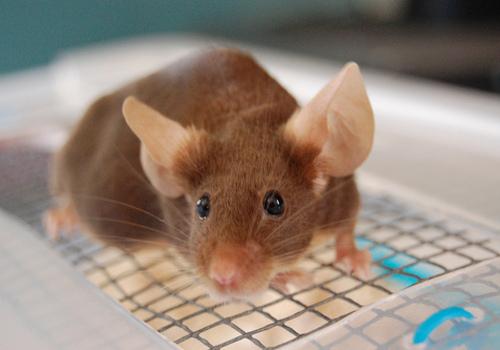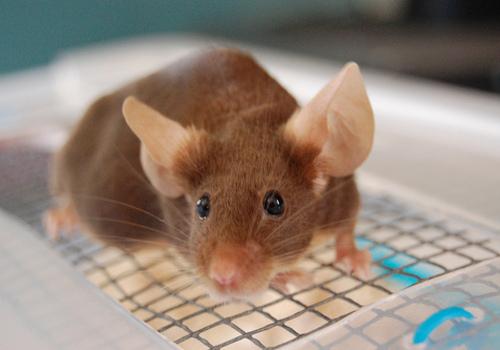It’s hard to believe that a critter as small as a mouse could actually destroy a big, healthy shrub, but it’s true. These tiny tunnelers like nothing better than munching on roots and bark, sometimes girdling and killing the plants in the process. A few types, such as dormice , hibernate in the winter; but most species are active through the year. In fact, most mouse inflicted damage to shrubs and trees occurs between October and April, when the tiny twerps move into mole runs or else tunnel, unseen, through the snow. They may also spend the winter in mulch that you’ve spread around your shrubs to protect them from cold-weather damage. (Who’s got the last laugh here?)

Not sure what little critter is nibbling on your shrubs? Here’s an easy way to find out: Just sprinkle white flour on the ground below your beleaguered plants. The next morning, check the telltale footprints. If you don’t recognize them by sight, pull out your handy field guide and make a positive I.D.
If you like a more permanent footprint record, set an ink pad in a large sturdy sheet of white paper, and surround the pad with a few kinds of tasty bait (for instance chunky peanut butter, apple slices, and sunflower seeds). The culprit will mosey on over to get the goodies and leave solid evidence behind.
These two simple steps will go a long way toward protecting your shrubs and trees from these mini marauders:
Step 1: When you mulch your shrubs, keep the material at least 6 inches away from the plants’ trunks. That way, you’ll deprive mice of one of their favorite hiding places.
Step 2: Before you mulch your shrubs for the winter, wait until the ground has frozen solid. So, even if the mice snuggle down in the cozy mulch blanket, they won’t be able to tunnel into the soil.
Before winter sets in, wrap the trunks of your shrubs (or young trees) loosely in aluminum foil to a height of 18 inches to 2 feet. The glittering, rattling surface will send the gnawers looking for food elsewhere.
If aluminum foil isn’t your idea of pleasing garden décor, guard your shrubs with a mini fence. Just circle your shrub bed or the root zone of each plant, with fine mesh wire that extends 3 to 4 inches above the ground and 6 to 8 inches below. Then, for added protection, spray the entire area with a homemade hot pepper spray.
This hot toddy will say a loud strong, “Get Lost!” to any mice that will sink their chops into your shrubs. And recipes don’t come any simpler than this one:
½ cup of dried cayenne peppers
½ cup of jalapeno peppers
1 gallon of water
Add the peppers to the water, bring it to a boil, and let it simmer for a half hour. Let the mixture cool, then strain out the solids, pour the liquid into a spray bottle and spritz you plagued plants from top to bottom.
As much as they dislike hot scents, mice also hate one cool on – namely mint. They’ll flee if you plant it among your shrubs, but there’s an easier way to put mint power to work in your yard. Just mix two tablespoons of peppermint extract or oil of peppermint in a gallon of warm water. Pour the solution into a hand-held sprayer, and thoroughly spritz the crown and stems of your shrub.
To you a dryer sheet might smell like the freshest thing this side of a violet patch. But that strong flowery scent sends mice scurrying. This go-away powder lasts longer indoors, but as a temporary measure, tie a few dryer sheets to the trunk of your shrubs.
Byron Hunter is an expert in pest control hom e remedies. He currently runs his own company and offers free consultations at Odessa Pest Control.
How To Keep Mice Out of Your Shrubs

